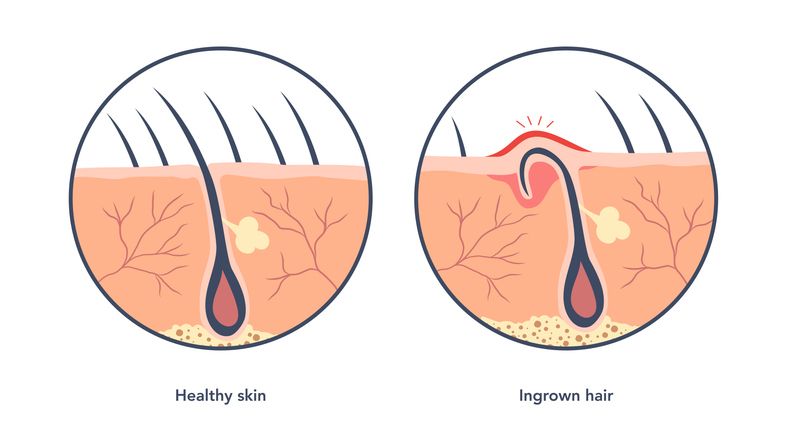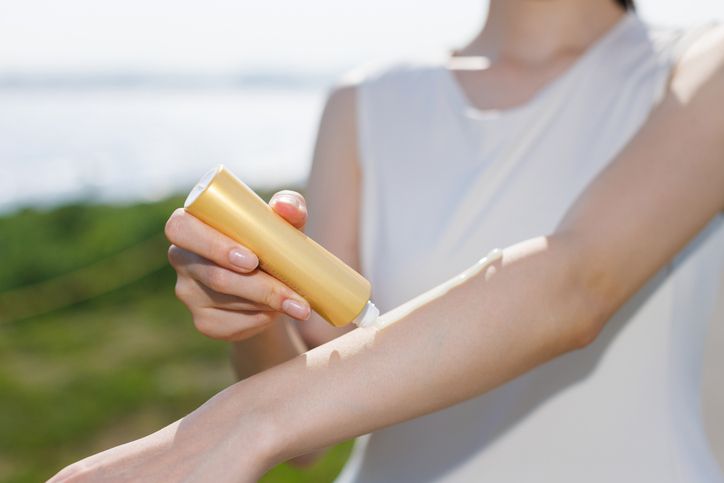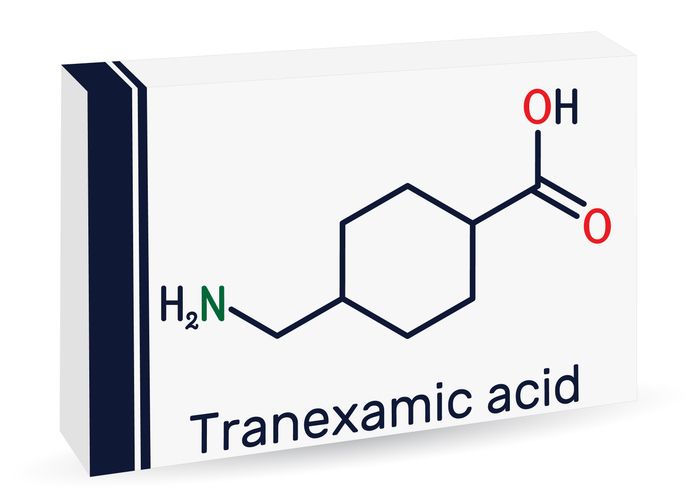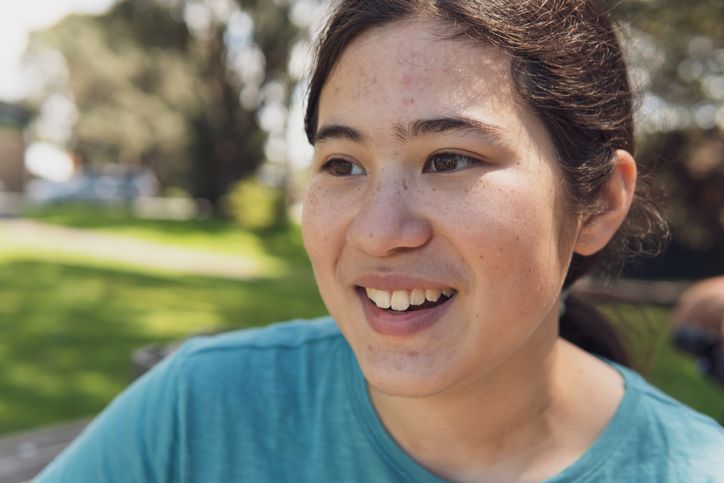- Home
- Trend
- Weight Loss Strategies
- Acne Tips
- Hair Health Information
- Blemish Removal Tips
- Acne Scar Removal Tips
- Muscle Building Techniques
- Intimate Care Tips
- Postpartum Intimate Care
- Eye Bags Wiki
- Tips for Face Slimming
- Secret of Permanent Hair Removal
- Breast Enlargement Tips
- Cure to Snoring
- Marionette Lines
- Skin-Tightening Secrets
Ingrown hairs are often seen as a minor cosmetic nuisance, but their effects on skin health can be far more significant. Left untreated, these stubborn bumps can cause irritation, infections, and even scarring, compromising not only your appearance but also your skin's overall health. Today, let’s dive into the causes, risks, and effective solutions for managing and preventing ingrown hairs.
How Ingrown Hairs Can Affect Skin Health?
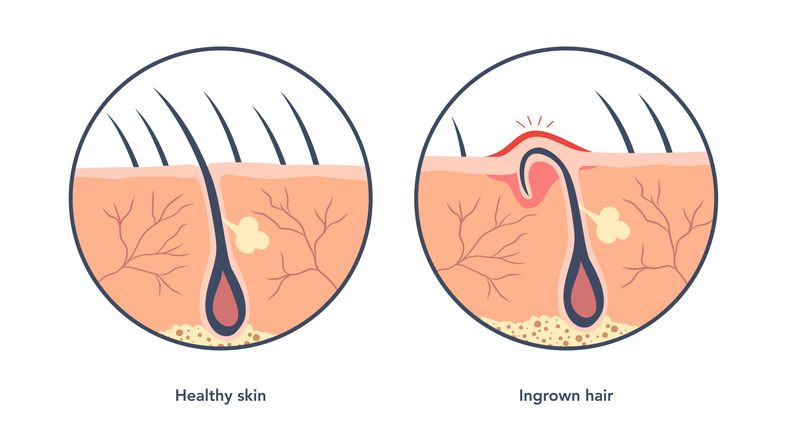
Ingrown hairs are more than a surface-level annoyance; they can have significant effects on your skin's health when left untreated. Understanding how they form and their potential impacts can help in addressing the issue effectively.
The Formation of Ingrown Hairs
An ingrown hair occurs when a hair strand grows back into the skin rather than breaking through to the surface. This is most common in areas that undergo frequent shaving, tweezing, or waxing, such as the face, neck, underarms, bikini line, and legs. Certain factors increase the likelihood of ingrown hairs:
Curved Hair Follicles: People with naturally curly or coarse hair are more prone to developing ingrown hairs because their hair tends to curl back into the skin.
Hair Removal Methods: Improper shaving techniques, like using a dull razor or shaving against the grain, can cause hair to be cut unevenly or too close to the skin. This can lead to sharp hair tips penetrating the skin as they grow.
Buildup of Dead Skin Cells: When dead skin cells accumulate around hair follicles, they can create a barrier that traps hairs beneath the surface.
How Can Ingrown Hair Impact Your Skin?
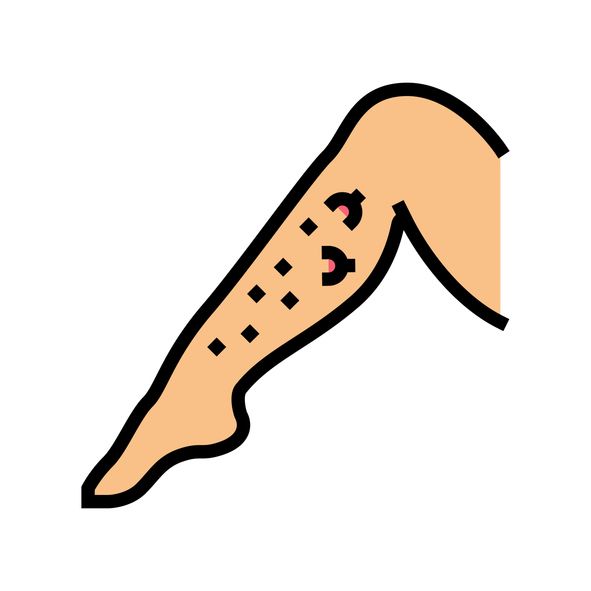
Ingrown hairs may seem like minor inconveniences, but their effects on the skin can go beyond temporary bumps or irritation. While an occasional ingrown hair often resolves naturally, chronic or severe cases can lead to lasting damage and discomfort.
Chronic Irritation
When ingrown hairs repeatedly form in the same areas, they can cause ongoing inflammation. This inflammation disrupts the skin’s natural barrier, which is responsible for keeping moisture in and irritants out. As a result:
• The affected skin becomes more prone to dryness, which can exacerbate sensitivity.
• Repeated irritation often leaves the skin feeling tender, swollen, and red.
• In areas subjected to friction, such as the bikini line or beard area, the irritation is amplified, making it uncomfortable and more challenging to heal.
Over time, chronic irritation from ingrown hairs can create a cycle of discomfort that requires targeted treatments to break.
Scarring and Pigmentation
One of the more lasting effects of ingrown hairs is the potential for scarring and pigmentation changes:
Dark Spots (Hyperpigmentation)
• Hyperpigmentation occurs when the body produces excess melanin in response to inflammation, leaving dark spots that can take weeks or even months to fade.
• People with darker skin tones are especially susceptible to hyperpigmentation, making the discoloration more noticeable.
Fine Depressed Scars
• Improperly removing an ingrown hair, such as by picking or squeezing, can damage the surrounding skin and leave behind tiny, pitted scars.
• These scars are particularly common in areas of frequent shaving or friction, such as the neck, bikini line, or underarms.
Risk of Infection
If an ingrown hair becomes inflamed, it can trap bacteria inside the follicle, turning a simple skin concern into a more serious issue:
Painful Bumps or Pustules
The infected area may swell further and become filled with pus, causing discomfort. In severe cases, this can develop into an abscess that requires medical attention.
Systemic Infections
If the infection spreads beyond the follicle, it can lead to more significant health risks, requiring oral antibiotics or surgical drainage.
Recurrent Infections
Once the skin is compromised, the area becomes more prone to future infections, creating a cycle of irritation and inflammation.
免費體驗
S6 Body Sculpting Treatment
1 Minute Self-Registration
Date should not be before minimal date
2 Common Causes and Triggers of Ingrown Hairs
Ingrown hairs can develop due to a combination of factors, many of which stem from improper hair removal techniques and inadequate skincare practices. Understanding these triggers is essential to preventing this irritating condition.
1. Improper Hair Removal Habits
One of the leading causes of ingrown hairs is the way hair is removed. Methods like shaving, waxing, and tweezing can inadvertently encourage hairs to grow back into the skin:
Shaving Techniques
Shaving with a dull razor or cutting the hair too close to the skin increases the likelihood of sharp hair ends curling back into the follicle. Additionally, shaving against the grain creates more friction, which can irritate the skin and make ingrown hairs more likely.
Tweezing and Waxing
These methods often break hairs unevenly beneath the skin’s surface. The sharp, jagged edges left behind are more prone to embedding into the skin rather than growing out smoothly.
2. Dead Skin Cells and Blocked Follicles
Another common cause of ingrown hairs is the accumulation of dead skin cells around the hair follicle. This buildup forms a barrier over the follicle, trapping the hair underneath the skin’s surface.
When the follicle becomes clogged, it creates the perfect environment for hairs to grow sideways or loop back into the skin, leading to irritation, redness, and bumps.
When Ingrown Hairs Become a Health Concern?
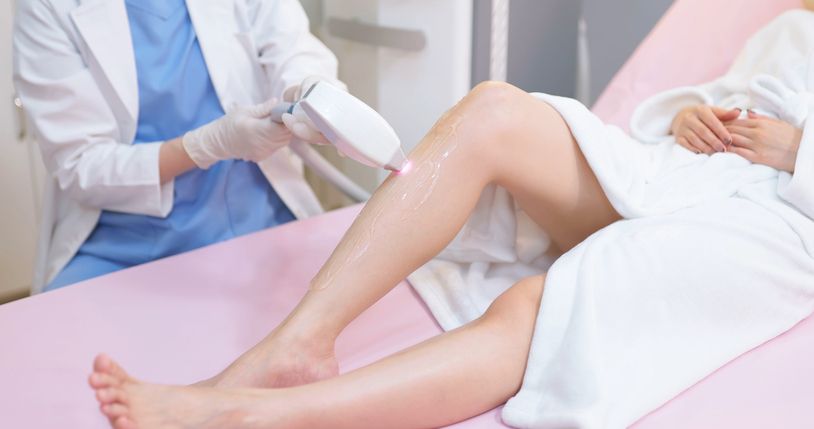
While an occasional ingrown hair is generally harmless and resolves on its own, recurrent or severe cases can signal more significant skin issues. Recognizing the signs of complications and understanding who is at higher risk is essential for timely treatment and prevention.
3 Signs of Complications
Ingrown hairs can escalate from a minor annoyance to a health concern when the following symptoms appear:
Persistent Irritation
If the area around an ingrown hair feels itchy, stings, or appears red and swollen, it may indicate deeper inflammation within the skin. This irritation often disrupts the surrounding skin's natural barrier, leaving it more vulnerable to further damage.
Cyst-Like Bumps
In cases where ingrown hairs remain trapped beneath the skin for extended periods, they can form noticeable bumps. Sometimes referred to as "hair loops," these visible ingrown hairs can develop into hard, swollen cysts that are both unsightly and uncomfortable.
Bacterial Infections
Inflamed ingrown hairs can sometimes trap bacteria within the follicle, leading to painful infections. This can result in pustules or abscesses that may require medical intervention, such as drainage or the application of antibiotic creams to prevent further spread.
Who’s at Risk?
Certain people are more likely to experience recurring ingrown hairs due to their hair type, skin condition, or lifestyle habits:
Hair Type
Those with coarse or tightly curled hair are especially prone to ingrown hairs. The natural curve of their hair follicles makes it more likely for hairs to bend back into the skin instead of growing outward.
Lifestyle Factors
Wearing tight clothing, especially around frequently shaved areas like the bikini line or neck, can increase friction and irritation, leading to ingrown hairs. Poor hygiene practices or using hair removal products that clog pores can exacerbate the problem.
Pre-Existing Skin Conditions
Conditions such as folliculitis or keratosis pilaris can create an environment where ingrown hairs are more likely to occur, as these issues often involve inflammation and blocked follicles.
Can You Remove Ingrown Hair At Home?
Removing ingrown hairs at home can be safe if done carefully, but improper techniques may worsen the problem or lead to complications like infections, scarring, or further irritation. Here's a breakdown of when it's safe and how to approach it:
When Is It Safe to Remove an Ingrown Hair at Home?
• The ingrown hair is visible near the skin's surface.
• There are no signs of infection (e.g., excessive redness, pus, or warmth around the area).
• The area is not swollen or too painful to touch.
If you experience any of the above, it's best to seek professional help.
Safe Steps for Removing Ingrown Hair at Home
1. Clean the Area
Wash the skin around the ingrown hair with warm water and a mild cleanser to reduce bacteria and minimize the risk of infection.
2. Apply Warm Compresses
Place a warm, damp cloth over the area for 5-10 minutes. This softens the skin and opens up the pores, making it easier to release the trapped hair.
3. Gently Exfoliate
Use a gentle scrub or a chemical exfoliant containing glycolic or salicylic acid to help remove dead skin cells that may be trapping the hair.
4. Use a Sterile Needle or Tweezers
5. Sterilize a pair of tweezers or a needle with rubbing alcohol.
Carefully lift the hair loop to bring it above the skin's surface.
Avoid digging into the skin, as this can cause damage or introduce bacteria.
6. Soothe the Skin
After removing the hair, clean the area again and apply an antibiotic cream or a soothing aftershave product to reduce irritation and prevent infection.
When NOT to Remove an Ingrown Hair at Home
If the ingrown hair is deeply embedded, attempting to extract it can cause more harm than good.
If the area shows signs of infection, such as pus, severe redness, or swelling, it's best to consult a healthcare professional.
If you frequently develop ingrown hairs or have a pre-existing skin condition like folliculitis or keratosis pilaris, at-home removal may exacerbate the problem.
Alternatives to At-Home Removal
Let It Resolve Naturally
In many cases, ingrown hairs will resolve on their own with proper skincare, such as regular exfoliation and moisturization.
Professional Treatment
Dermatologists or skincare professionals can safely remove ingrown hairs using sterile techniques.
Preventive Measures
Regularly exfoliate, use proper shaving techniques (e.g., sharp razors and lubricating shaving cream), and consider switching to a hair removal method like professional laser treatment, which targets hair follicles and prevents future ingrown hairs.
免費體驗
S6 Body Sculpting Treatment
1 Minute Self-Registration
Date should not be before minimal date
How Laser Treatment Slow Regrowth of Ingrown Hair
If you are tired of dealing with ingrown hair, laser hair removal can be the revolutionary approach to managing unwanted hair while addressing the root causes of ingrown hairs. This advanced technology targets the hair follicle directly, providing a long-term solution that benefits both hair reduction and skin health.
How Laser Treatments Work?
Laser treatments work by delivering concentrated light energy to the hair follicle. This process disrupts hair growth at its source, resulting in smoother skin and fewer complications related to traditional hair removal methods like shaving or waxing.
Prevents Ingrown Hairs: By disabling the hair follicle, lasers eliminate the risk of hair curling back into the skin, a common cause of ingrown hairs.
Decreases Hair Growth: Repeated laser sessions slow down hair regrowth significantly, reducing the need for frequent hair removal.
Enhances Skin Appearance: Laser treatments can improve skin texture by minimizing scars, pigmentation, and irritation caused by past ingrown hairs or razor bumps.
Why Choose A3 Laser Hair Removal?
At Perfect Medical, the A3 Laser Hair Removal Treatment stands out for its precision, safety, and ability to address issues unique to various skin types and hair textures.
Targeted Precision: The A3 treatment is designed to focus on problem areas prone to ingrown hairs, such as the bikini line, underarms, neck, and beard area. This precision ensures effective treatment for the most challenging spots.
Safe for All Skin Types: Unlike older laser technologies, A3 is suitable for a wide range of skin tones, including darker skin, and can effectively treat tightly curled or coarse hair that often leads to ingrown hairs.
Minimal Discomfort: A3 uses advanced cooling mechanisms to ensure a comfortable experience, even during longer sessions.
A Long-Term Investment in Skin Health
Switching to laser hair removal can transform your hair removal routine and improve overall skin health. The reduction in hair growth means fewer opportunities for irritation, ingrown hairs, or scarring. With consistent sessions, you’ll experience smoother, clearer skin and freedom from the cycle of shaving, tweezing, or waxing.
Be A Part of the Future of Ingrown Hair Management
Thanks to advancements in laser-assisted hair removal, the struggle with ingrown beard hairs and razor bumps could soon be a thing of the past. By combining cutting-edge treatments with a consistent skincare routine and proper hygiene, you can enjoy smoother, healthier skin without the discomfort of traditional methods. Take the first step toward an irritation-free complexion—book your appointment with Perfect Medical today!
A3 Laser Hair Removal Treatment免費體驗
S6 Body Sculpting Treatment
1 Minute Self-Registration
Date should not be before minimal date
FAQ

1. How is ingrown hair diagnosed, and what are the signs?
Ingrown hairs are typically diagnosed through a visual examination of the affected area. Common signs include small, swollen bumps that may be red or irritated, and in some cases, visible hair loops trapped beneath the skin. For individuals with coarse or curly hair, the condition is more common as tightly curled hair is more likely to grow back into the skin. If you notice stinging, itching hair, or signs of infection like pus-filled bumps, it's best to consult a dermatologist.
2. What are the best ways to treat ingrown hair bumps?
To treat ingrown hair bumps, start by gently exfoliating the area to clear dead skin cells and help release visible ingrown hairs. Use products containing glycolic acid or a mild facial cleanser to reduce irritation. Avoid tweezing ingrown hairs, as this can worsen inflammation. Instead, apply a soothing after-shave product to calm the skin and keep it hydrated. Persistent cases may benefit from laser treatments, which slow hair regrowth and prevent future ingrown hairs.
3. How do hair removal creams compare to other hair removal methods in preventing ingrown hairs?
Hair removal creams, or chemical hair removers, dissolve the hair at the skin’s surface, reducing the chance of sharp hair tips that can grow back into the skin. Unlike shaving, which often produces tightly curled hair that penetrates the skin, these products leave smoother edges. However, for individuals with sensitive skin, creams may cause irritation. If ingrown hairs persist despite switching hair removal methods, laser treatments can be an effective alternative to permanently decrease hair regrowth.
4. Can shaving gels and single-blade razors help prevent ingrown hairs?
Yes, using a lubricating shaving gel combined with a sharp single-blade razor can significantly reduce the risk of ingrown hairs. Shaving gels soften the hair and provide a smooth surface for the razor, while single-blade razors cut hair more cleanly without creating jagged edges. Always follow up with a mild facial cleanser to remove excess product and a soothing after-shave product to minimize irritation and prevent ingrown hair bumps.
5. What is the role of laser treatment in managing ingrown hairs?
Laser treatment targets the hair follicle directly, slowing regrowth and reducing the likelihood of ingrown hairs. Unlike other hair removal techniques, laser treatments are effective for all skin types and are particularly beneficial for those with coarse or curly hair, which tends to grow back into the skin. Repeated sessions not only decrease hair regrowth but also improve skin texture by reducing pigmentation and scars caused by chronic ingrown hairs. For lasting results, combine laser treatments with a consistent skincare routine.





